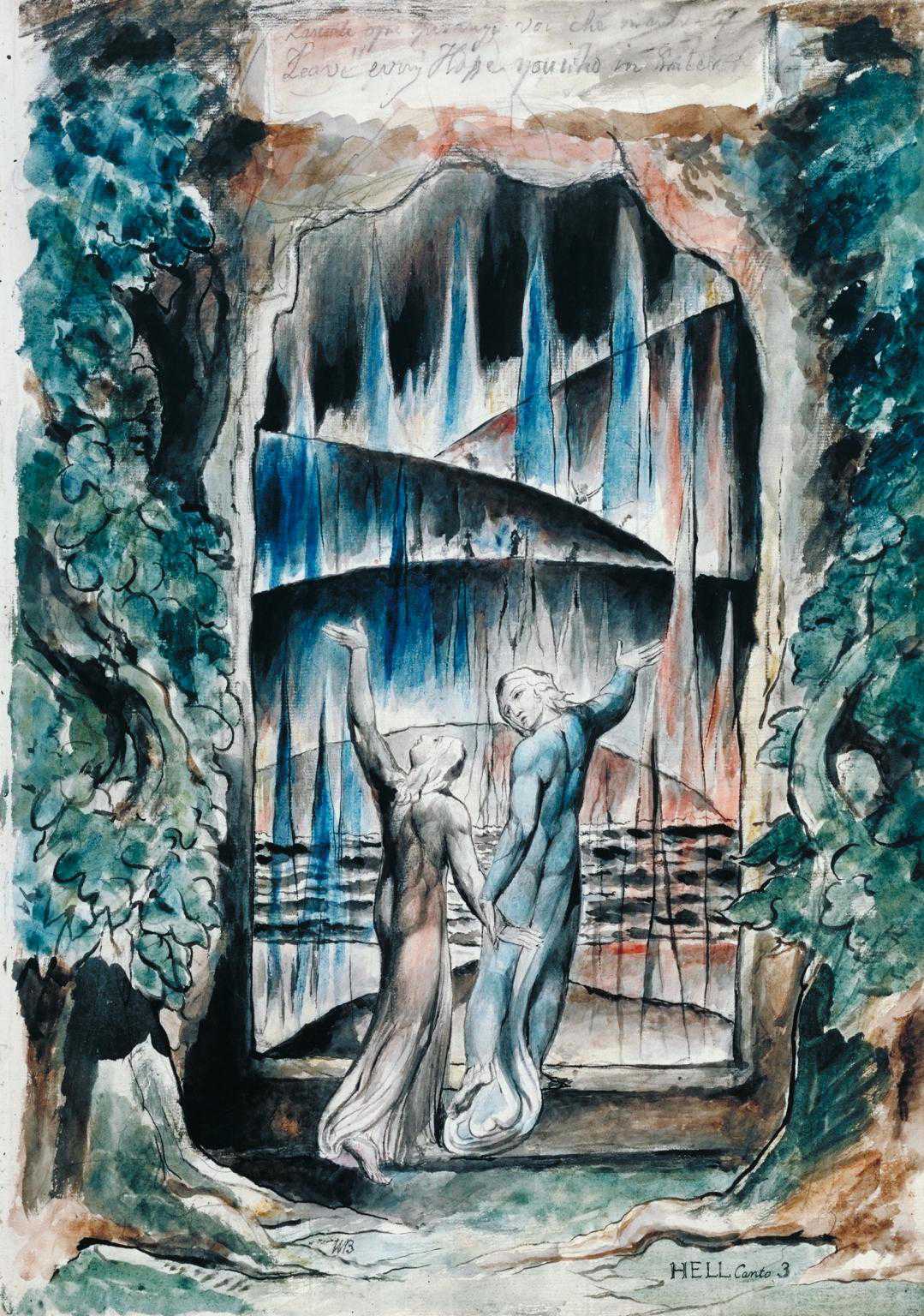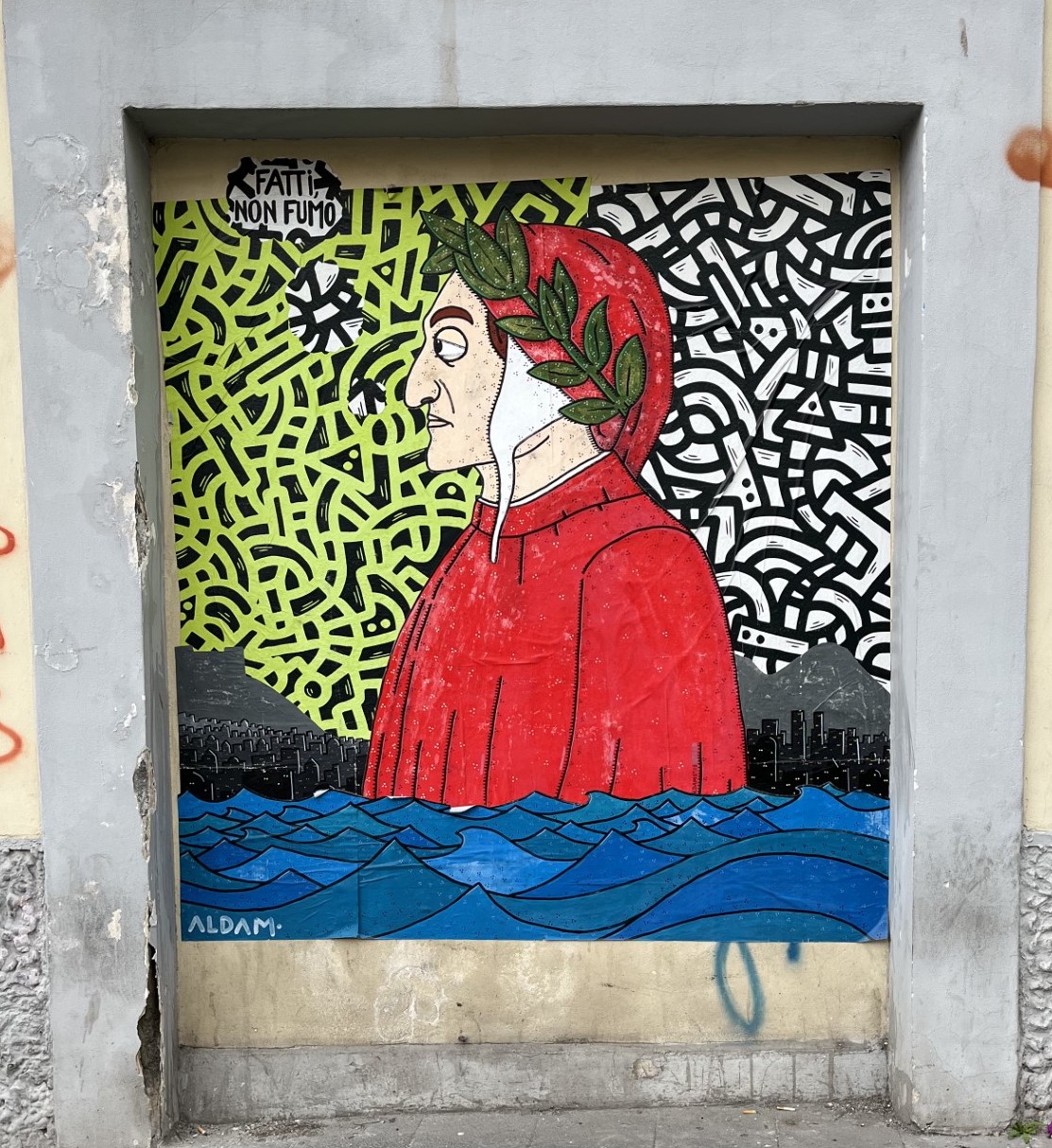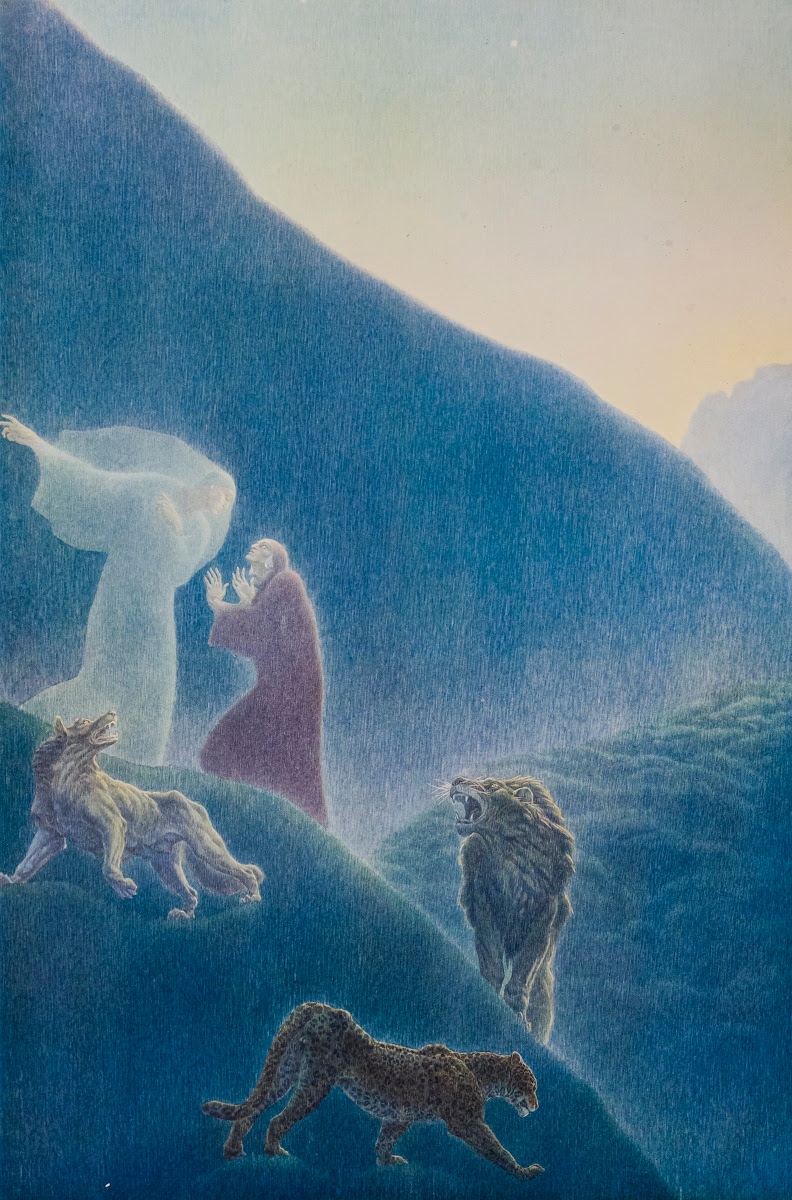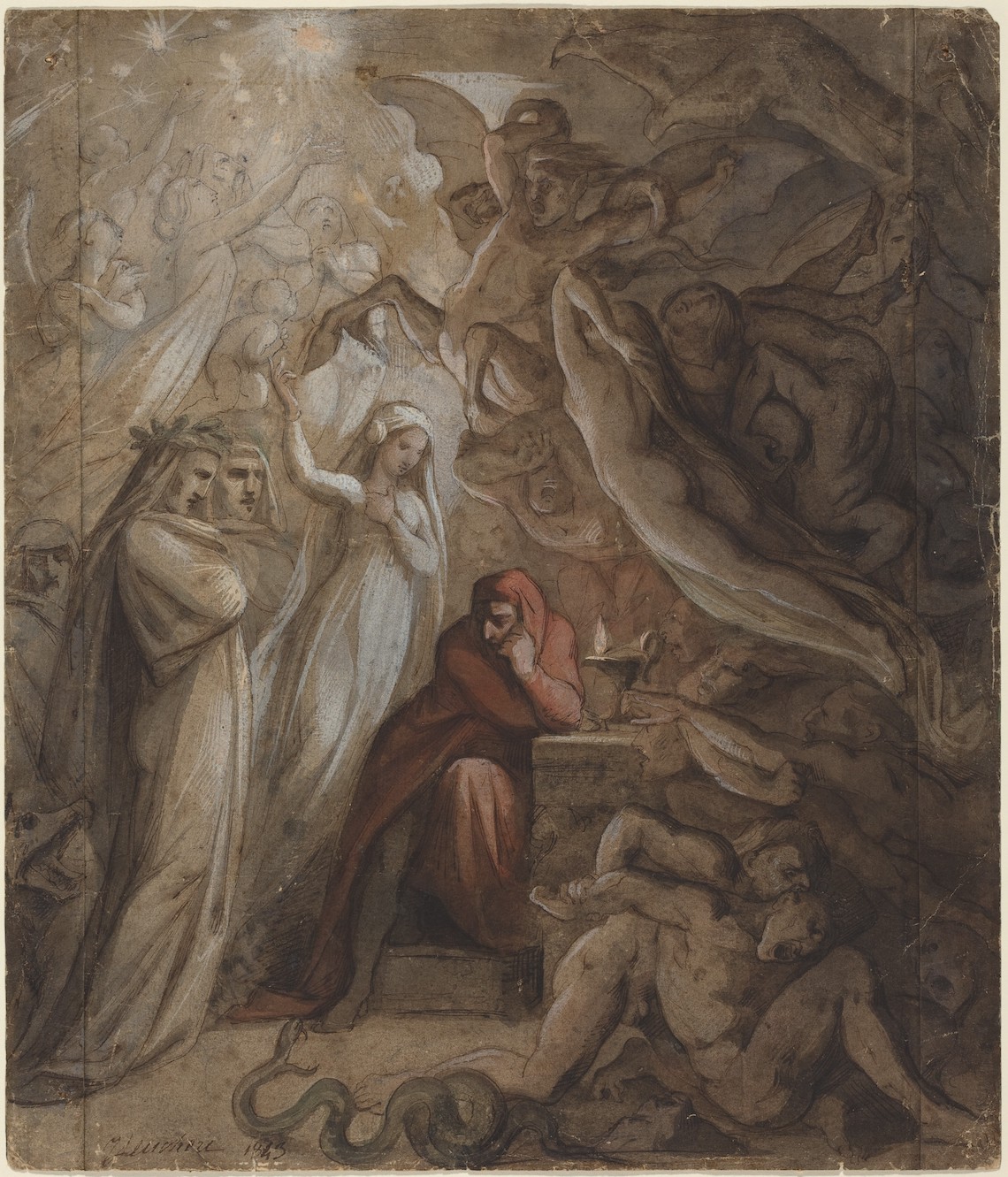“Many artists have interpreted Dante’s afterlife by letting themselves be inspired by the culture and fears of their time. Amos Nattini, between 1915 and 1939, undertakes this great project with passion and dedication, giving us an absolutely human and realistic version of it. His lithographs were published together with the Divine Comedy text in three volumes. The edition of the Cariparma Foundation is dated 1939.” — “Amos Nattini and The Divine Comedy,” Google Arts and Culture, 1900s (Retrieved March 28, 2024).
William Blake’s Illustrations Inspired by Dante (1824-1827)
 “In 1824, Blake’s friend the artist John Linnell, commissioned him to make a series of illustrations based on Dante’s Divine Comedy. Blake was then in his late sixties. A contemporary account informs us that he designed 100 watercolours of this subject ‘during a fortnight’s illness in bed.’
“In 1824, Blake’s friend the artist John Linnell, commissioned him to make a series of illustrations based on Dante’s Divine Comedy. Blake was then in his late sixties. A contemporary account informs us that he designed 100 watercolours of this subject ‘during a fortnight’s illness in bed.’
“Here you’ll find seven illustrations from Hell, Purgatory and Paradise. Each picture is accompanied by an explanation and an original audio recording from the 1812 translation of Dante that Blake himself used when making his designs. So this is your chance to learn not just about Blake, but also about the Florentine poet Dante Alighieri (1265–1321).” — “William Blake’s illustrations to Dante’s Divine Comedy,” Tate
Jean-Jacques Feuchère’s Dante Meditating on the ‘Divine Comedy’
Jean-Jacques Feuchère, a French artist (1807-1852), depicted an image of Dante meditating on his literary work, the Divine Comedy (1843). This work is made with “pen and brown ink with brown wash and watercolor over graphite, heightened with white gouache, on 3 joined sheets of laid paper.” — “Dante Meditating on the Divine Comedy” (1843), National Gallery of Art
Graffiti Portrait of Dante in Naples

This graffito, which is located in Naples, represents a stylized representation of Dante Alighieri. At the top left corner of the work, the phrase “fatti non fumo” (facts not smoke) is included — this could relate to the famous line “fatti non foste a viver come bruti, / ma per seguir virtute e canoscenza” (Inf. 26.119-120: “you were not made to live your lives as brutes, / but to be followers of worth and knowledge”), which is spoken by Ulisse in the Eighth Circle of Hell. — ALDAM, Dante Graffiti, Via dei Tribunali, Napoli.
700th Anniversary Exhibit at Staatliche Museen zu Berlin (2022)
“To mark the occasion of the 700th anniversary of the death of Italian poet and philosopher Dante Alighieri (1265–321) the Kupferstichkabinett is showing selections from two woodcut series from the 1920s.
“The series are by the Danish artist Ebba Holm and the German Klaus Wrage. Both deal in multifaceted ways with Dante’s literary magnum opus The Divine Comedy – and thereby with his virtual journey through Hell, up the Purgatorial mountain and on to Paradise.
“Not only will additional works by Odilon Redon, Wilhelm Lehmbruck and Willy Jaeckel be on display, but also coloured computer drawings by Berlin artist Andreas Siekmann (born in 1961) from his 94-part complex Die Exklusive – Zur Politik des ausgeschlossenen Vierten (The Exclusive – On the Politics of the Excluded Fourth) (2002–2011). In several series from Die Exklusive Siekmann depicts particularly contemporary journeys to Hell undertaken by Dante and his guide, the poet Virgil.” [. . .] —Staatliche Museen zu Berlin
The exhibition will be open from February 12, 2022 to May 8, 2022.
See also: the Kupferstichkabinett gallery webpage, linked here.
See our posts on Klaus Wrage here.
- 1
- 2
- 3
- …
- 5
- Next Page »



